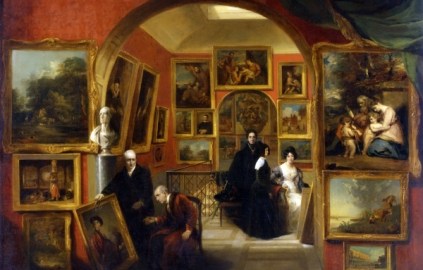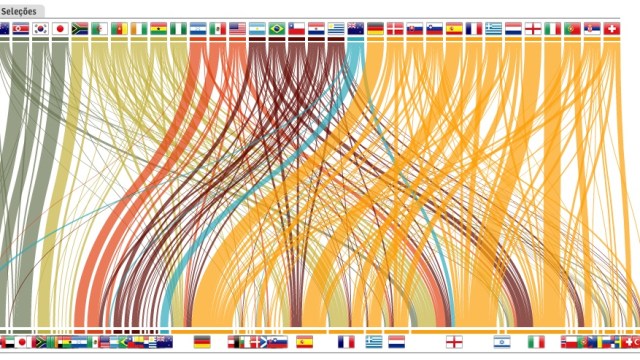Double Vision: “Seeing Double” at the Yale Center for British Art

If imitation is the sincerest form of flattery, then John Scarlett Davis must have been the sincerest flatterer in all of England in 1829. In the exhibition Seeing Double: Portraits, Copies and Exhibitions in 1820s London, the Yale Center for British Art solves the “puzzle” of Davis’s painting The Interior of the British Institution Gallery (shown), which caused a stir in the London art scene of 1829 in ostensibly recreating an exhibition of Old Masters hosted in 1829 by the British Institution, a London-based art organization run by collectors and connoisseurs. “Ostensibly” becomes the key word in examining Davis’ painting, as the Yale Center’s research shows just what kind of liberties Davis took in his recreation and to what ends he took those liberties.
Nobody stood taller in eighteenth-century British art than Sir Joshua Reynolds. Even nearly 40 years after Reynolds’ death, his shadow loomed across all British art. Davis shows Benjamin West, Reynolds’ successor as president of the Royal Academy, admiring a self-portrait by Reynolds along with one of Reynolds’ students, James Northcote. Neither West (dead 9 years earlier) nor Reynolds’ self-portrait were at the exhibition in 1829, but Davis fancifully places them there to connect British art to the Old Masters actually on hand. In his self-portrait, Reynolds unashamedly alluded to works by Michelangelo and Rembrandt. In this painting, Davis cozies Titian’s The Mystic Marriage of St. Catherine (1549–1554) near Reynolds’ The Holy Family (1788–1789) to emphasize Reynolds as Titian’s heir in a way that the original hanging did not. Similarly, Davis measures works by Thomas Gainsborough against those by Anthony Van Dyck to raise him to the status of a “New” Old Master.
At first glance, Davis’ work looks to modern eyes like documentation. Thanks to the research of the Yale Center, we can recognize the bias—even the propaganda—behind Davis’ painting, which captures the art historical moment of 1820s Britain, when that nation longed to play with the big boys of the cultural traditions from the continent. Davis’ painting can be read as special pleading, but also as national pride. “With the accelerated circulation of images in 1820s London, the skills that marked the connoisseur—identification and discernment—were being cultivated by a wider audience,” the mini-catalogue for this small but intriguing show says. “Drawing on sources he encountered throughout the London art scene, Davis designed his painting to delight and challenge a visually literate audience.” Davis’ work still delights and challenges visually literate audiences, but now as a window into a time and place in which art history took place between their very eyes.
[Image: John Scarlett Davis, The Interior of the British Institution Gallery, 1829. Oil on canvas. Yale Center for British Art, Paul Mellon Collection.]
[Many thanks to the Yale Center for British Art for providing me with press materials for Seeing Double: Portraits, Copies and Exhibitions in 1820s London, which runs through September 19, 2010.]





